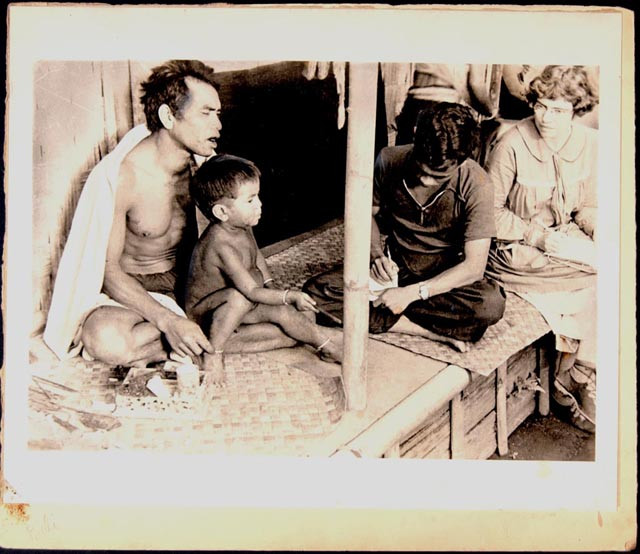Popular Reads
Top Results
Can't find what you're looking for?
View all search resultsPopular Reads
Top Results
Can't find what you're looking for?
View all search resultsGreat Indonesian literature: Tales of Panji
Change text size
Gift Premium Articles
to Anyone
T
he stories of Javanese cultural hero, Prince Panji Inu Kertapati, dating from the 13th century, mark the development of a truly Javanese literature that was no longer overshadowed by the great Indian epics, the Ramayana and Mahabharata.
Set among the eastern Javanese kingdoms, the stories tell of Panji’s search for his beloved Princess Candra Kirana, before the two lovers are happy-endingly reunited. During the Majapahit empire from the 14th to 15th centuries, the Panji stories became extremely popular, spreading from Java to Bali, Lombok, Sulawesi, Kalimantan and Sumatra.
The Panji tales were spread by merchants along the trading routes, and became one of the most popular forms of literature in Southeast Asia during the 17th and 18th centuries, and crossed the borders to the Malay region where they are known as “Hikayat”. The tales further spread to Vietnam, Thailand, Myanmar and Cambodia. The Panji influence is described by renowned scholar Adrian Vickers as “a Panji civilization in Southeast Asia.”
Read also: Saving the Javanese heritage of 'Cerita Panji'
Panji tales are unique as there was no single author; the tales were written by diverse authors, each bringing in their version of the story and in their local languages. For instance, Bali calls the Panji character Malat and varied Balinese customs can be found in the stories. In Thailand and the neighboring countries, the character of Panji is known as Inao or Eynao, and his lover as Bossaba.
There is no specific Panji storyline. Generally, the story is about Kuripan’s Prince Raden Inu Kertapati, who is engaged to his niece Dewi Galuh Sekartaji from childhood. However, the mother of Dewi Galuh plans to marry her to another prince. Galuh escapes to the forest where she experiences adventures and disguises herself as varied characters including a warrior who conquers other kingdoms.
Prince Inu Kertapati begins his search and enters the woods. He goes through a wide range of adventures that encompass meeting with ogres, amorous scenes, going through numerous disguises, and waging wars. At the end, the two lovers are reunited. The love story and the adventures are popular among all layers of society.
A sketch of Panji, wearing his distinctive rounded cap, found in a Malay manuscript of 'Hikayat Dewa Mandu', copied in Semarang, 1785. (British Library/File)The extent of creativity of the authors can sometimes result in confusion. For instance, a Panji tale under the title of “Hikayat Cekel Wanengpati” has 29 different versions. Moreover, manuscripts under the same title may have different content, while on the other hand those under different titles may have the same content! Quite a number of authors simply used the name of Panji as part of the title of their book to gain popularity.
Read also: How Panji met Genji in Tokyo
The popularity of Panji tales attracted the attention of numerous foreign travelers and scholars who came to Indonesia and subsequently wrote about the culture of the archipelago.
The oldest mention on Panji is found in the classical work of a famous Dutch writer, Francois Valentijn, which consists of five volumes of books about Indonesia, Oud Nieuw Oost Indie, published from 1724-1726. Two Panji tales are mentioned in volume three, page 26, namely “Hhakajat (Hikayat) Misagomitar” and “Corripan” (Kuripan).
The oldest list of Panji tales was reported by Haan (1900: 298), mentioning a Panji tale, “Tsiarang Kolijna”, while Stamford Raffles wrote a version of the Panji tale in his famous book The History of Java.
In the 19th century there was a burst of activity by Dutch scientists who began to conduct research on Panji tales. A famous Javanese scholar Poerbatjaraka wrote up his work in Panji Verhalen onderling Vergeleken (A Comparison of Panji Tales).
The Leiden University Library has a collection of more than 252 Panji manuscripts, some written on lontar (palm leaves) and mostly written on paper originating from different regions in Indonesia and in eight local languages.
The National Library of Indonesia (Perpusnas) has nominated the Panji manuscripts in their collection to UNESCO to be included as part of the world heritage registry the Memory of the World. The reasons for this nomination are that the Panji tales are products of local scholars from East Java written seven centuries ago and which have become extensively popular and have spread out not only across Indonesia but also to neighboring countries.
Read also: Photographer rekindles local folktales
In addition, Panji tales have also inspired other local cultural expressions, including dances, wayang (puppetry), theater and mask performances. The National Library of Indonesia has also invited the national libraries of Malaysia, Cambodia and Thailand, the British Library and the Leiden University Library to support the nomination. The libraries of Malaysia, Cambodia, and Leiden have expressed their willingness to join the nomination, while the British Library has expressed strong support for the cause.
The decision on the inclusion of the Panji tales in the Memory of the World will be announced by UNESCO in October this year.
On 3-5 August, a Panji festival will be staged in Kota Tua, Jakarta, to commemorate the 50th anniversary of ASEAN and will also comprise Panji dance performances from five provinces, an exhibition and seminars.
***
The writer is a former minister of education and culture. As of 2016, he is a member of the National Library team registering the old manuscripts of the Panji tales with UNESCO’s registry of the Memory of the World. Currently he is assisting the East Java administration in reviving the Panji culture.
---------------
Interested in writing for thejakartapost.com? We are looking for information and opinions from experts in a variety of fields or others with appropriate writing skills. The content must be original on the following topics: lifestyle ( beauty, fashion, food ), entertainment, science & technology, health, parenting, social media, and sports. Send your piece to community@jakpost.com. Click here for more information.












